Best piano VSTs 2026: The best plugins to get the most authentic sound
Get the best piano sound without shelling out thousands for the real thing - options from Native Instruments, Spitfire Audio and more
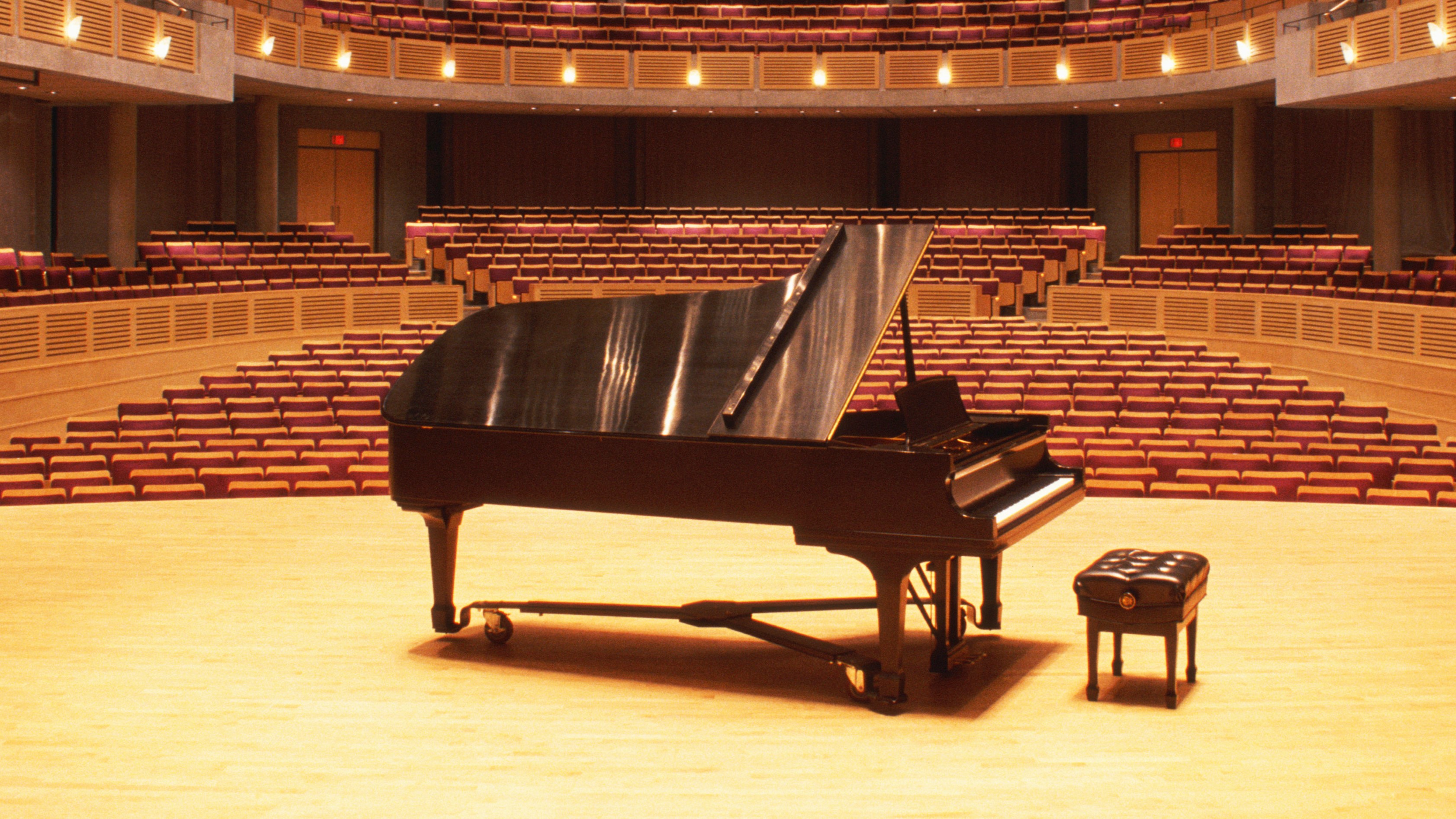
The piano is one of the most popular instruments in the world, so creating the best piano VSTs, for realistic software virtual piano emulation, has been the number one priority for software and DAW developers for the last couple of decades. As such, most DAWs already ship with decent enough software pianos, but they don't usually offer quite the nuanced character and breadth of dynamic sound you can expect from a real upright or concert grand. Third-party software developers have therefore been falling over themselves to create even better software virtual pianos so there are now loads of options out there.
Software virtual pianos use either modelling algorithms or samples of real instruments to create beautiful emulations. We'll discuss more on these in our buying advice section. Many piano instruments – modelled or sampled – feature effects and can have a number of tweakable parameters like other virtual instruments. What you can expect from both kinds of instrument are exceptional piano sounds as developers have been perfecting these instruments for many years. But the best thing is that you have access to models of pianos that can costs tens of thousands of dollars/pounds at a tiny fraction of the price. And with your DAW as a host, you don't even need to play like a concert pianist to sound like one.
If you'd like to read some in depth buying advice about the best piano VSTs, it's included at the bottom of this guide. You can click the link to go there. If you'd rather get to the products, then keep scrolling.
Best piano VSTs: MusicRadar’s Choice
Your choice of piano really comes down to the music you make. If you are a singer/songwriter with the piano as your main song focus, go for one of the larger multisampled instruments that focus on all of the detail of famous – and expensive – grand pianos. In this respect, it's hard to overlook Spitfire Audio's Hans Zimmer Grand Piano that delivers all the sound of the super-composer's favourite grand, with meticulous recordings at many different microphone positions. Similarly, Garritan's Abbey Road Studios CFX Concert Grand delivers a legendary grand in a legendary setting – an older title but one that still delivers an amazing sound. We also have to mention Synthogy Ivory II Studio Grands here as you get two pianos for the price of many other options, both of which sound incredible.
If you aren't focussed on grand pianos, but the keyboard being your main instrument, then there are two other options that deliver great piano sounds alongside all sorts of other key-based instruments. Spectrasonics Keyscape is just about every keyboard instrument you can imagine in one package. Expensive, yes, but its quality emulations and effects are right up there with the best software instruments available. Finally, one of the few modelled instruments that scores well whenever a new version is released is Modartt's Pianoteq, an instrument that will run light on any system but sounds anything but light, and with loads of purchasing options for any budget level.
Best piano VSTs: Product guide
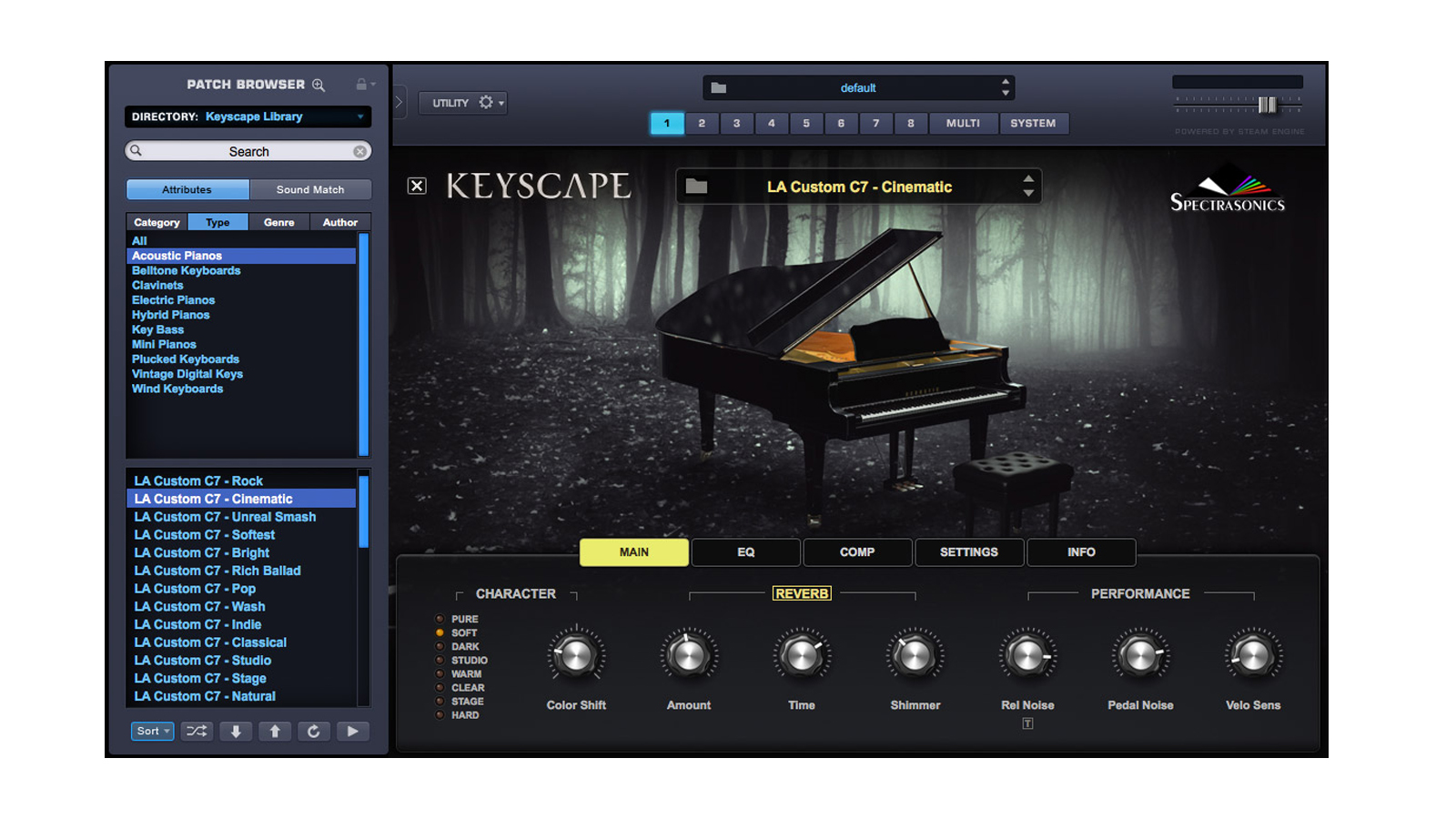
1. Spectrasonics Keyscape
Our expert review:
Specifications
Reasons to buy
Reasons to avoid
Keyscape is the ultimate keyboard instrument in that it features 36 separately modelled keyboards ranging from Wurlitzers to Fenders, toy pianos to Rhodes with a huge number of pianos. It breaks our rules by offering both multisampling and modelling but you'll care not, as the results are stunning.
Spectrasonics endeavoured to capture all the noise, imperfection and quirks of the original keyboards, as well as the full spread of their tonality. Each instrument has been sampled with up to 32 velocity layers, and uses multiple round-robins per layer for 'human' variation between notes.
Keyscape's interface is clean and straightforward. The browser lets you select from the ten top-level instrument types (Acoustic Pianos, Clavinets, Electric Pianos, etc), or head straight to one of the 36 specific models. The presets are listed in the bottom pane, and with over 500 included, most of them come in related sets.
Heading up the Acoustic Pianos category is the LA Custom C7, an 'enhanced' Yamaha C7 that uses "rare long-fiber virgin wool felt" on its hammers. It's joined by a Wing upright piano from 1900 in two configurations.
All the instruments sound phenomenal, serving up a versatile melange of flavours, from the super clean LA Custom C7, through the funky, evocative electric pianos and clavs, to the pretty Celeste and other Belltones, and the crusty finish and grit of the toy and tacked pianos.
Keyscape is almost impossible not to fall in love with. The care, attention to sonic detail and passion that have been poured into it are palpable at every turn, the huge preset library is an absolute pleasure to wander through, and the deep multisampling employed results in a very high level of playability and stunning sound.
Read the full Spectrasonics Keyscape review
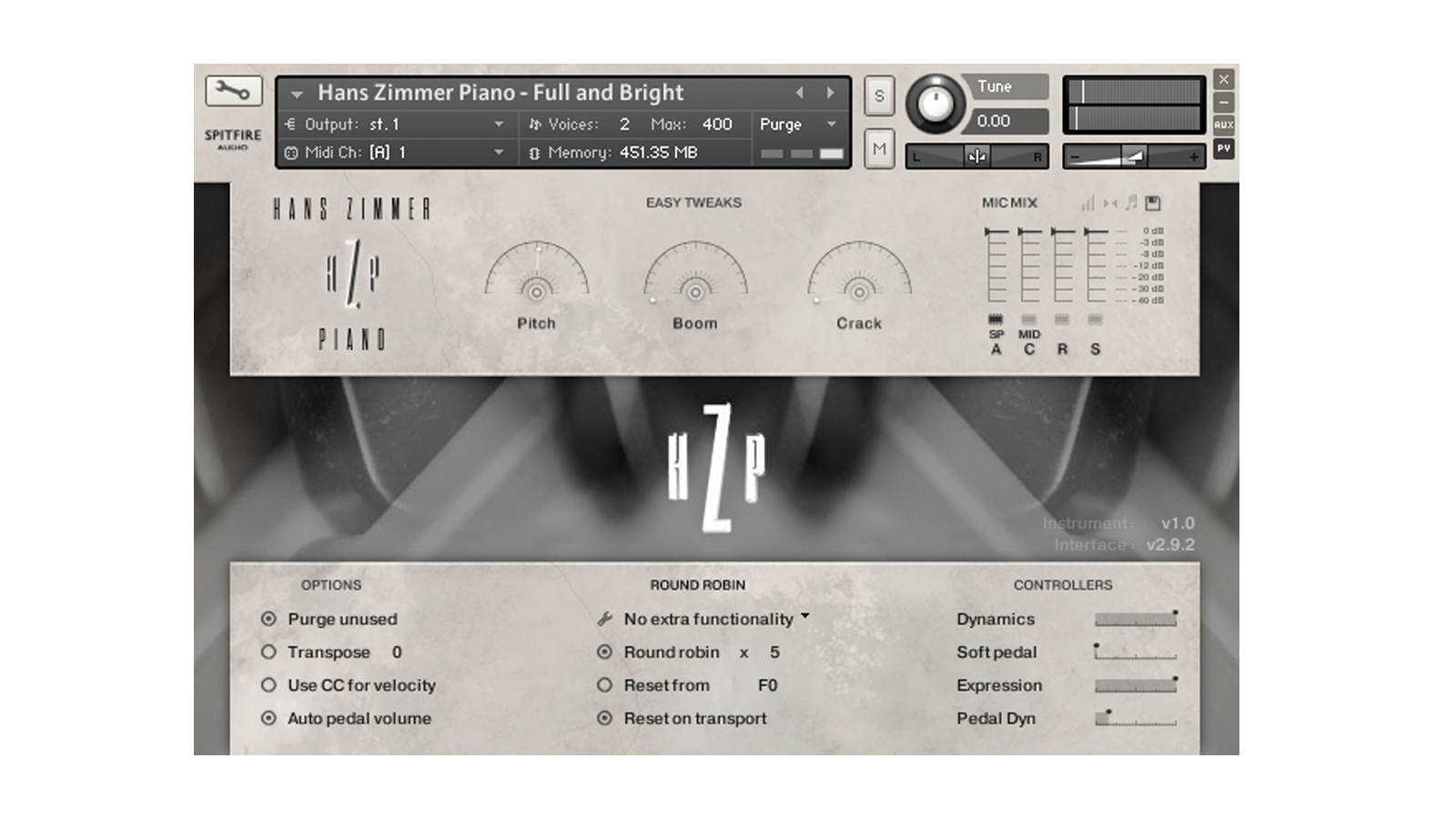
2. Spitfire Audio Hans Zimmer Grand Piano
Our expert review:
Specifications
Reasons to buy
Reasons to avoid
Spitfire set out to produce the ultimate sampled grand piano with this and who better at the helm of the project than soundtrack genius Hans Zimmer. The piano used is one of Zimmer's favourites – the in-house Steinway Model D grand piano at the Lyndhurst Hall at AIR Studios – which has also inspired many of his soundtracks.
The collection is set out with folders with different sounds – Warm And Rounded, or Low And Weighted, for example. You also get microphone positions to also help guide you through the surprisingly varied sound and an amazing 60 different ones were employed during the recording. There are, for example, close, mid, room and surround options with the close and mid options giving you a slightly brighter sound. The further you move out, the more you get of the wonderful room where the piano was recorded mixed in. You get all sorts of blending options to get a more detailed sound that mixes all of the different positions, or home in on a very specific sound, tailored to your mix.
While HZP only features one piano, the detail and the amazingly balanced sound is second to none. With multiple velocity options, and an incredible 88,000 samples capturing every nuance of the piano in question, you can expect to be able to reproduce just about every aspect of a Steinway Model D – and there's even a folder of piano effects to take things off-road should you wish. While expensive compared to other options here, you won't find a much more detailed grand piano, without spending well into six figures on the real thing.

3. Garritan Abbey Road Studios CFX Concert Grand
Our expert review:
Specifications
Reasons to buy
Reasons to avoid
CFX Concert Grand captures the legendary piano in the eponymous and enormous Studio One at Abbey Road. You get three, via different mic arrays: Classic, retaining the natural sound of the instrument; Contemporary, brightening it up somewhat; and Player, making it sound like you’re actually sitting at the instrument.
Adjustments include Lid Position, Sympathetic and Sustain Resonance, Pedal Noise, mic levels, stereo width and more, with onboard effects comprising EQ, reverb and saturation, as employed to great effect by the small but rather lovely collection of presets.
With the full install weighing in at a drive-busting 132GB, it’ll come as no surprise to learn that CFX can take time to load its samples, but it sounds absolutely beautiful. It has exquisite tonal detail, powerful lows, glassy highs and a level of expressiveness that has to be felt to be believed.
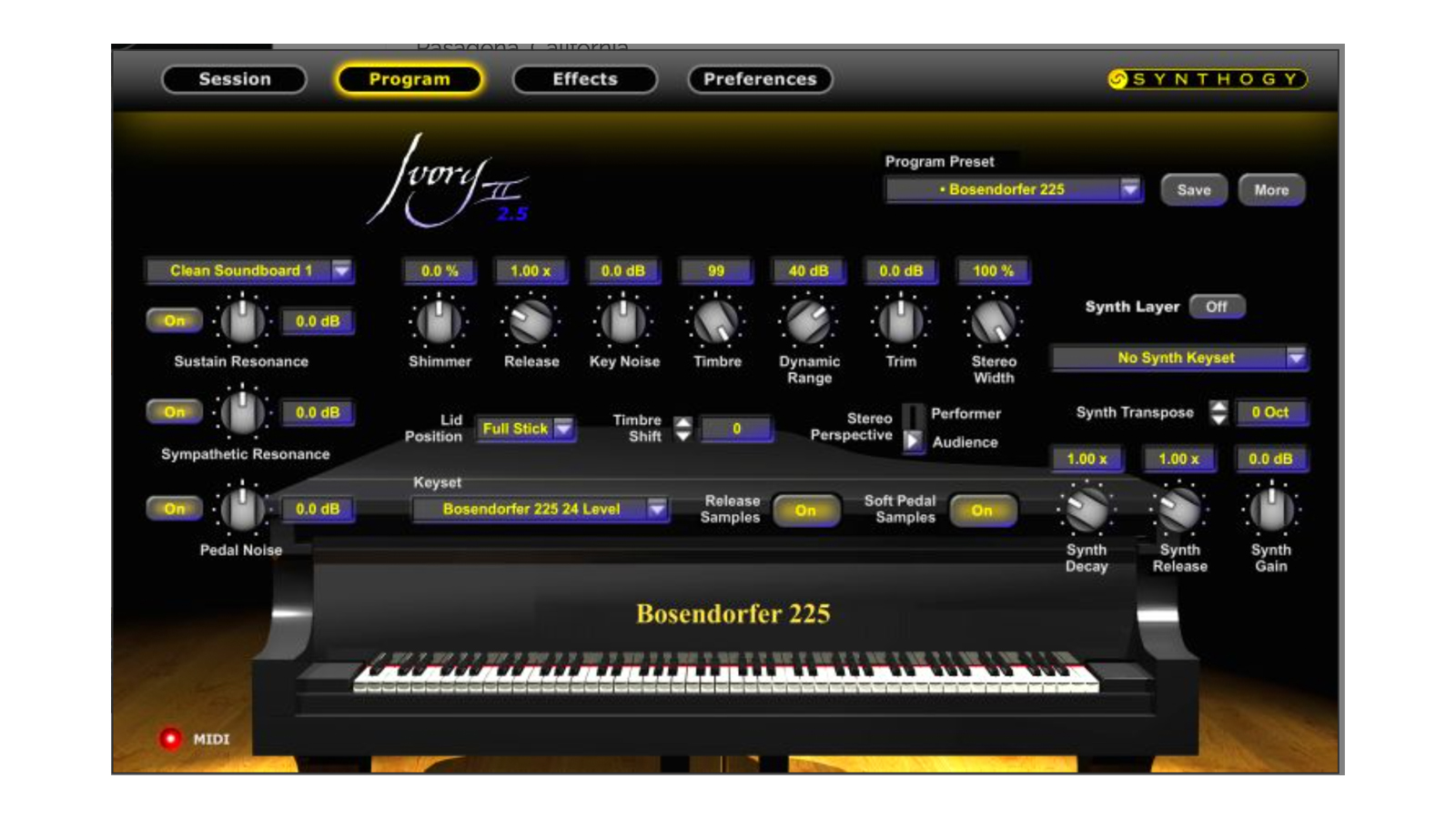
4. Synthogy Ivory II Studio Grands
Our expert review:
Specifications
Reasons to buy
Reasons to avoid
Ivory II Studio Grands contains, as Synthogy claims: "two exceptional Studio Grands recorded in a legendary studio". As such you get a Steinway B recorded at Power Station New England, Connecticut and a Bösendorfer 225 recorded at Firehouse Studios, Pasadena. Both pianos are thoroughbred 7ft studio performers and these are impressive multisampled versions weighing in at 112GB in size.
The Ivory II interface, while not the most contemporary in design, gives plenty of sound-shaping control. You get everything from editable resonance and lid position to key and pedal noise, dynamic range and stereo width, and there’s even a simple onboard synth should you, for some reason, fancy layering in a cheesy pad sound.
EQ, chorus and reverb are on tap in the Effects page, while the Session page grants access to a similarly comprehensive range of performance-related parameters, including pitching, velocity response and the aforementioned Half Pedalling controls.
Both pianos sound absolutely magnificent, and contrast well with each other – the raw Bösendorfer being the weightier of the two, the Steinway having the brighter sound. Studio Grands is another fine addition to the Ivory II line-up.
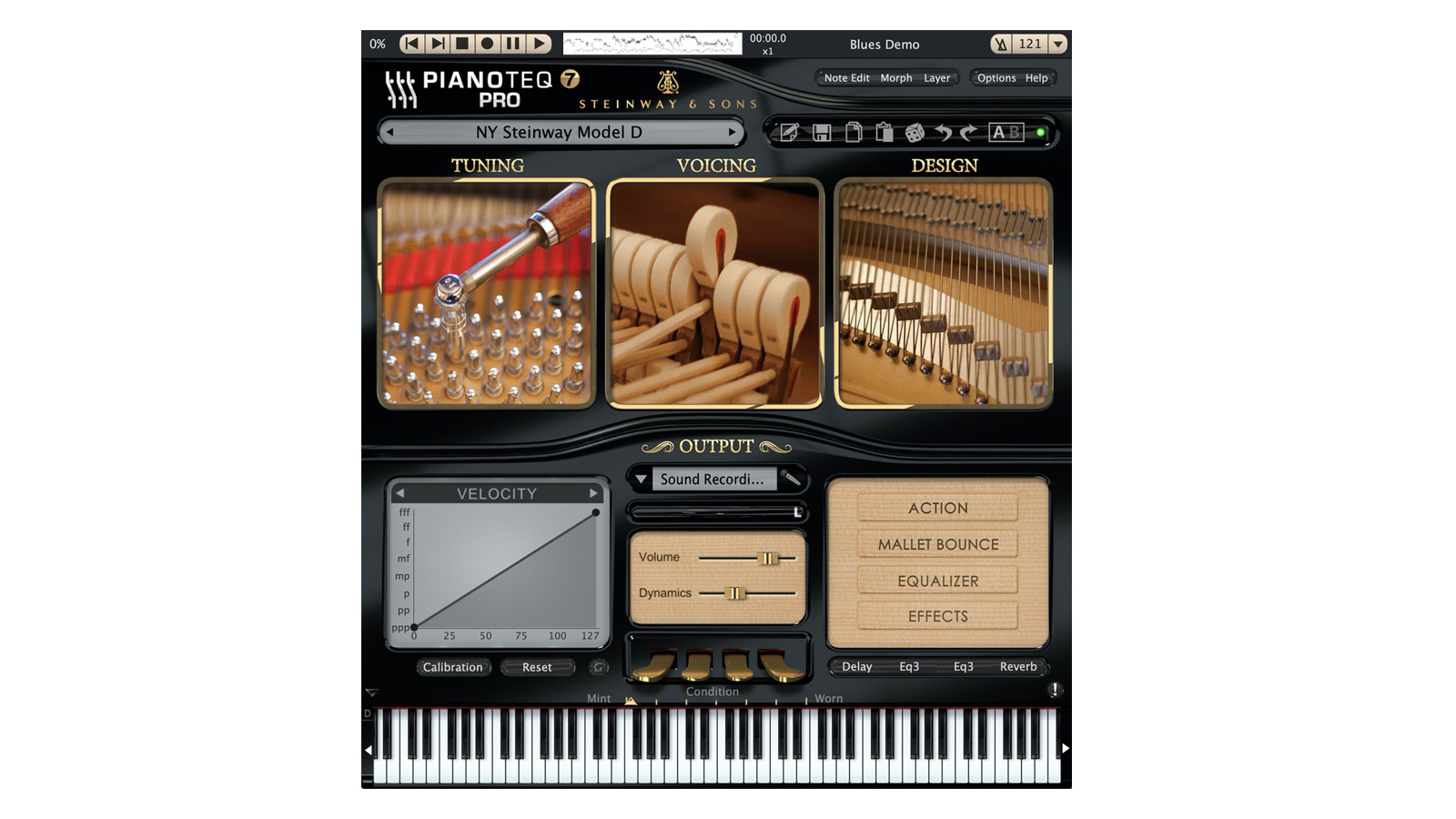
5. Modartt Pianoteq 7
Our expert review:
Specifications
Reasons to buy
Reasons to avoid
Modartt’s Pianoteq is quite simply one of the best modelled pianos out there. Unlike sample-based products that record acoustic instruments at varying velocity levels for playback, Pianoteq creates tones by way of modelling the relationship between hammers striking strings, that are coupled to a resonant soundboard. Modelling also requires a fraction of the disk space that sampling does: compare the relatively small download of Pianoteq to the multi-gigabyte size of a high-end sample library.
Pianoteq is a veritable cornucopia of pianistic possibilities – from Steinway B and D grands (approved by the instrument manufacturer itself) to more esoteric models by Grotrian, Steingraeber and others. Each instrument has variations, as well; some of the Steinway B varieties include those named Recording, Close Mic, and Cosmic, each with its own character and sonic imprint.
Despite many editing options and other features, Pianoteq is surprisingly easy and nimble to navigate. Modartt’s modelled instruments have an organic, acoustic shimmer to them that will keep you playing. The Steinway models are detailed and rich, just like their acoustic inspirations. Other models shine as well – especially the Upright U4 and the J. Donhal “Close Mic” – and Pianoteq’s acoustic pianos exhibit incredible personality.
Pianoteq, with its lean CPU requirements, stunning sound, and near-infinite editing capabilities is a breath of fresh air. Even if you have a go-to hardware or software piano instrument or library, Pianoteq is worth a look and listen; it sounds that good.
Read the full Modartt Pianoteq 7 review

6. e-instruments Session Keys Grand Bundle
Our expert review:
Specifications
Reasons to buy
Reasons to avoid
The Grand bundle comprises two multisampled instruments (also available individually for around £99/€99/$99 each), the Grand Y (Yamaha CFIIIS Concert Grand) and Grand S (Steinway D Concert Grand). The Steinway delivers the more lively sound of the two while the Yamaha is warmer, but both sound magnificent.
Each can be switched between 'Concert' and 'Studio' mode, the latter recorded with the lid removed and the mics closer for a drier, more contemporary tone.
The Pentamorph controller morphs between five preset combinations of forward and reverse samples, and mechanical noise, while the Tonality editor facilitates noise, resonance and envelope shaping.
A useful collection of effects has been scripted in, and the superb Smart Chord and Animator systems enable automatic chord generation combined with configurable playback of a sizeable (but preset-only) library of performance-controllable phrases.
These are excellent instruments and the Grand Bundle delivers both with aplomb and a decent saving. E-instruments' Acoustic bundle is also great, adding an upright to the collection – but if it's just the bigger sound you want, then Grand delivers.
Read the full e-instruments Grand Bundle review
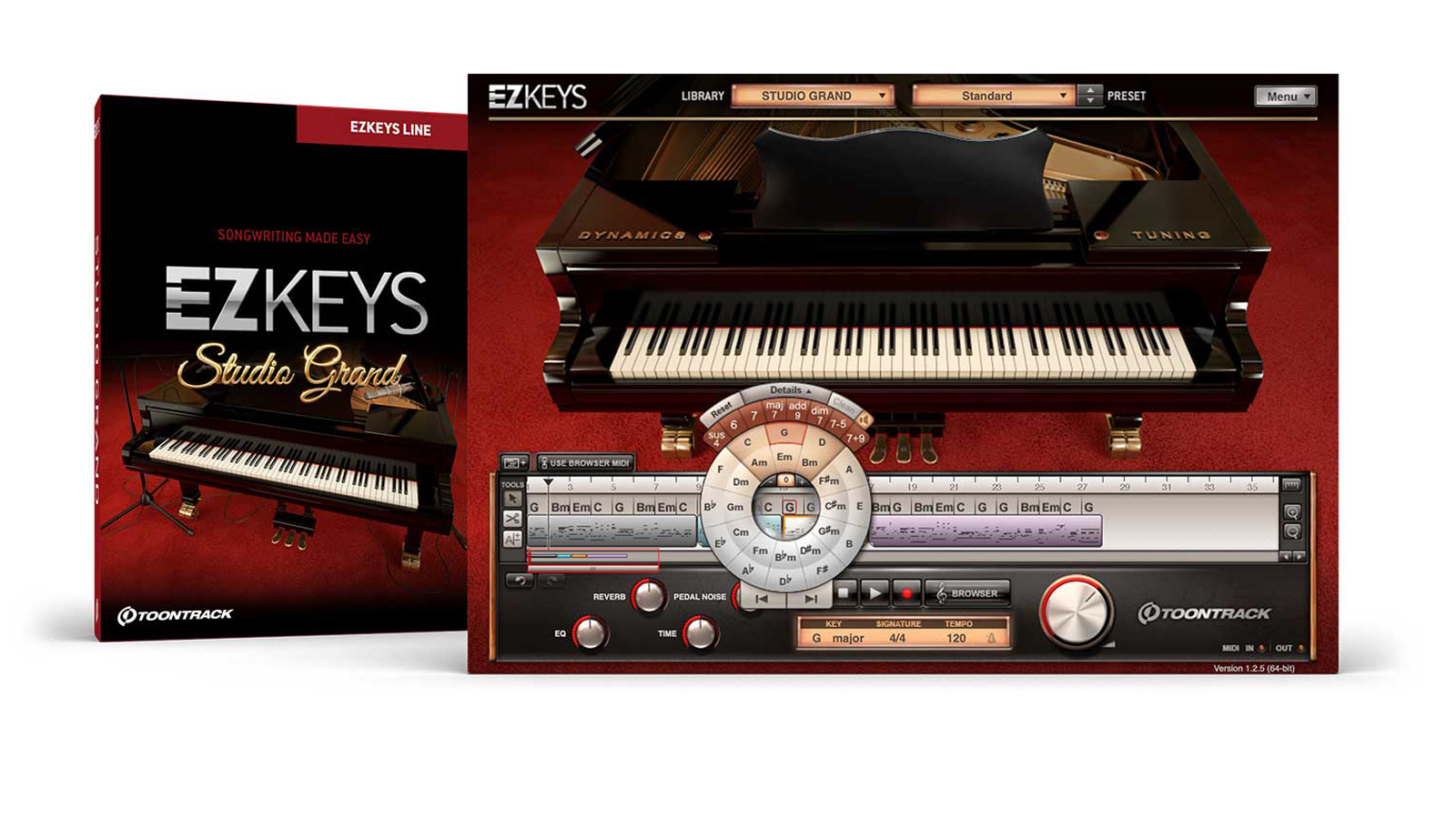
7. Toontrack EZKeys
Our expert review:
Specifications
Reasons to buy
Reasons to avoid
EZKeys is Toontrack's keyboard ecosphere that the company might say is a way of life rather than a single instrument! It consists of instrument packs dedicated to just about every keyboard out there, with multisampled recreations of classic and contemporary models. These include some 16 titles covering everything from Mellotron to grand; upright to pipe organ.
You get MIDI files and chordal features thrown in with each of these titles to help your playing and composing plus effects for a varied sound. There are also additional MIDI packs to help you home in on more specific playing styles, more than 70 titles covering genres like Prog, Synth Pop and even (our personal favourite) Goth Rock.
Some of the sound pack highlights include Studio Grand (a sampled Steinway B-211 recorded at OAL Studio, Sweden); the Grand Piano (a Steinway Model D which we described as "flexible enough to bend to your creative will"); Upright Piano (sampled from an Östlind & Almquist); and one of our favourites, Dream Machines (a Rhodes Mk 7 and a celeste we described thus: "Effortless sound shaping, great playability and silky sonics has us beaming.")
To be honest there's a vast choice here but with Toontrack's rep you can be assured that the sampling is right up there – although perhaps not as meticulous as other piano emulations here – and the MIDI side of things is amply covered. Not only is your instrument taken care of, then, but so is your playing style and composing thanks to DAW integration. You'll also want to take advantage of the ecosphere vibe where once you buy in, you get other titles at heavy (usually half price) discounts.
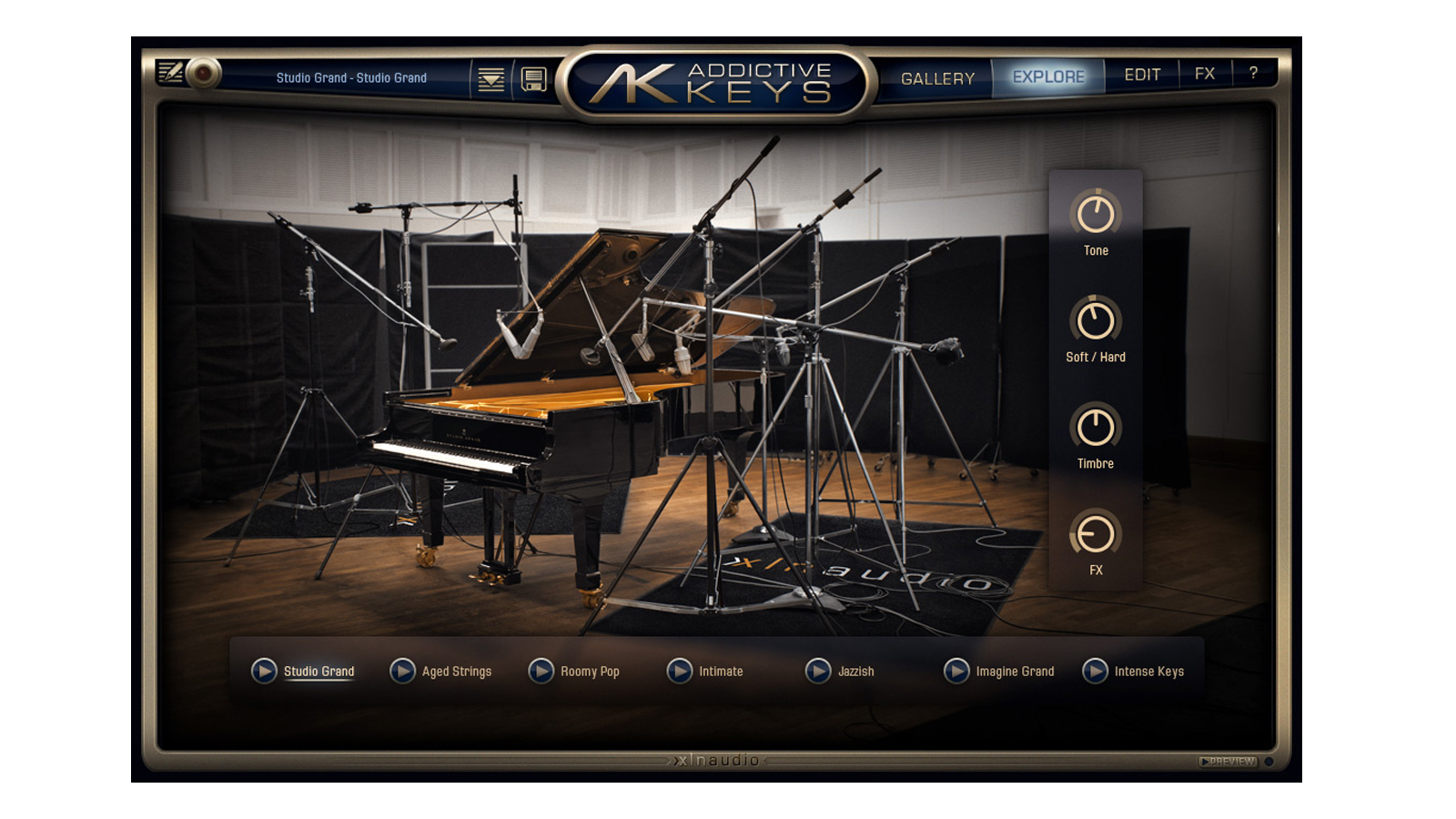
8. XLN Audio Addictive Keys
Our expert review:
Specifications
Reasons to buy
Reasons to avoid
The Addictive Keys range comes in three flexible bundle options so you can choose two, three or all four classic multisampled keyboards. These are a Fender Rhodes Mark I, Yamaha U3 Upright Piano, Steinway Model D Concert Grand and Yamaha CP-80 Electric Grand, so these are based on some of the best keyboards available.
The aim is to provide excellent source sounds with plenty of customisation (EQ, dynamics, effects and so on), but with a small disk footprint (under 8GB for the whole lot). Each instrument has been captured using a number of mics in a number of positions, enabling you to mix and match three stereo channels, complete with combined panning and width controls.
You get a decent number of edit features including pitch, filter and volume envelopes, as well as per-mic insert processing (EQ, chorus, compression) and two 'Delerb' (delay plus reverb) effects. Other effects include seven flavours of noise (e.g. tape and vinyl), five types of distortion and three modulation effects (chorus, phaser and tremolo).
AK's core sounds tick all the right boxes, and although you're limited to the tonality of the source instruments, the mic options provide an enormous palette even before you touch the EQ. XLN have put a lot of work into creative patch design. The likes of Prepared Horror (grand), Reverse Attacks (upright), and Glow Sticks (electric piano) show off the insert effects, as much as the source samples, to great effect.
Addictive Keys successfully sidesteps the complexity of more detailed piano libraries, delivering a genuinely useful palette of core sounds and excellent processing.
Read the full XLN Audio Addictive Keys review

9. Native Instruments Alicia's Keys
Our expert review:
Specifications
Reasons to buy
Reasons to avoid
Like other piano plugins in this roundup, Alicia’s Keys has been around for a while. But good piano plugins stay around and this 2010 release is still one of NI's better Kontakt piano instruments (you can also go for The Giant, The Maverick and The Gentleman, among many others).
Developed in collaboration with Alicia Keys and her engineer Ann Mincieli (and with Thomas Skarbye programming) the result is an instrument based on her own Yamaha C3 Neo, one she has used for most of her work in the studio and live.
There is just one main piano instrument here, but it’s accompanied by six tabbed pages with features ranging from algorithmic and convolution reverbs to attack/release behaviour and sympathetic resonance settings. Both sustain and sostenuto pedals are catered for and, if you have a continuous sustain pedal, there’s a simulated half-pedalling option. One of the nicest features is a simple fader control for mechanical noise, including pedal, key and even microphone hiss.
The pink interface may not appeal to everyone, and the sound lacks some of the natural room character associated with classical piano instruments; however, that clearly wasn’t the remit. Alicia’s Keys delivers an excellently ‘produced’ piano sound, with plenty of tone and behaviour-shaping flexibility, all from a fairly compact 7GB drive footprint.
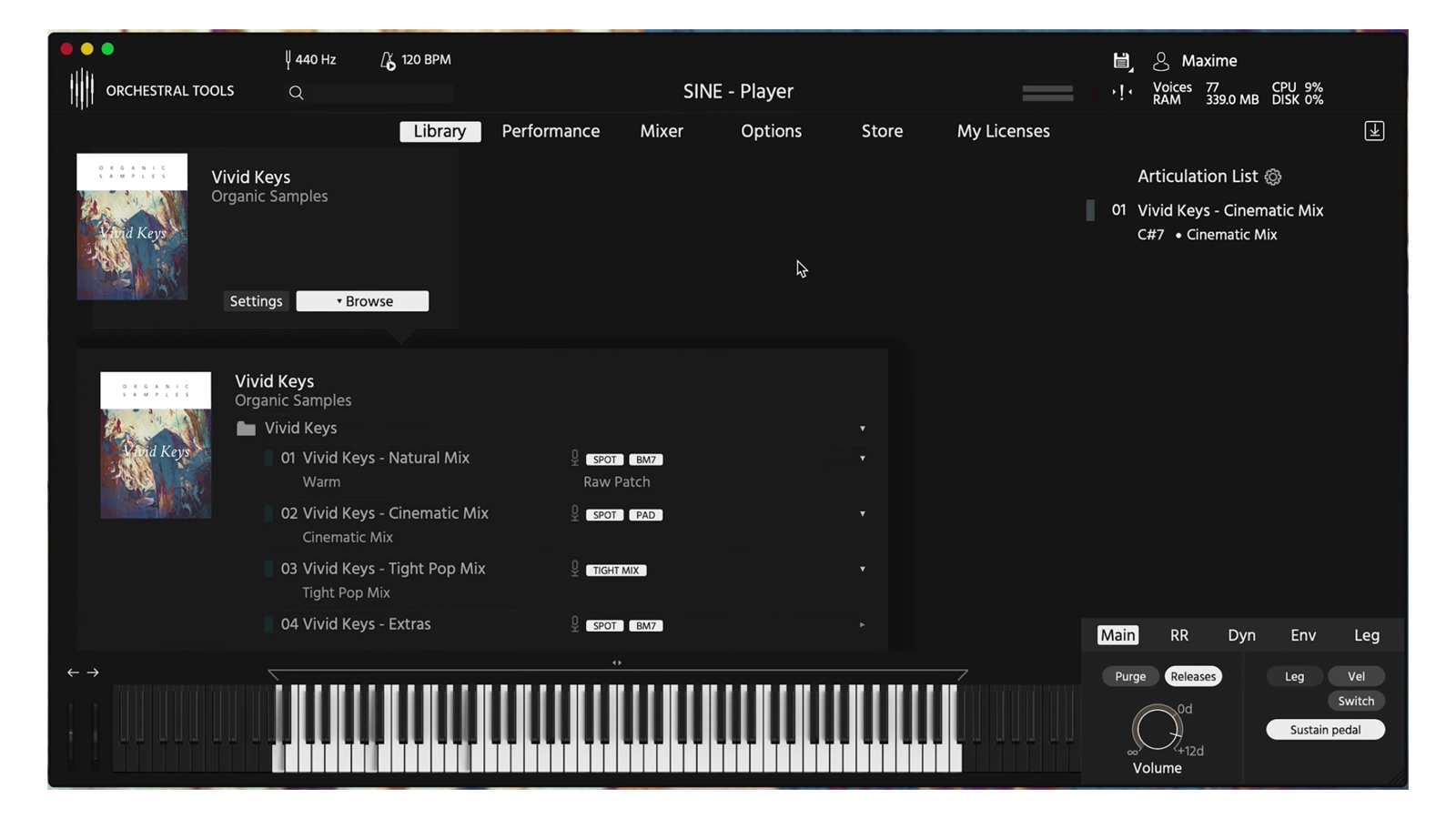
10. Orchestral Tools Vivid Keys
Our expert review:
Specifications
Reasons to buy
Reasons to avoid
Orchestral Tools is well known for its orchestral collections, particularly its mighty Metropolis Ark series. But it also has an Orchestral Grands title – a grand piano recoded very much within an orchestral context – and Vivid Keys, this lovely standalone instrument and part of OT's Organic Samples series.
The Yamaha C3 is probably the one grand piano you are likely to find in more pro studios than any other grand, and on using Vivid Keys it's easy to hear why. It has a beautiful, mellow yet full sound, and this title captures it perfectly.
It is played as a sample-based instrument within OT's Sine Player – a Kontakt-like host and freely available. While only based on the C3 piano, you do get three different mixes for a versatile sound. The 'natural mix' is a more upfront sound with optional reverb; a 'cinematic mix' focusses on the softer dynamics of the piano but also adds an evocative pad; finally the 'pop mix' delivers a tight and punchy sound suitable for more contemporary action.
All in all this is a great and surprisingly varied title, delivering atmosphere in spades and all for a very decent price, and one of the most cost-effective ways to get a grand sound. You can also buy Vivid Keys as part of OT's Organic Samples bundle which gets you six other collections, including strings, vocals and a Bösendorfer piano, all for €300 (£255 / $321 approx), a saving of €200 (£170 /$200 approx) over buying them individually.
Best piano VSTs: Buying advice

What you need to know about the best piano VSTs
MusicRadar's got your back
Broadly speaking you can divide software piano instruments up into the most popular multisampled type, and then the rarer modelled instrument. Multisampled pianos are created by recording the sounds from the original acoustic pianos, usually in an exceptional environment – recording studio or concert hall – to capture the sound of the room as well as the instrument. The recording comprises the actual notes, all played at several velocities, different microphone positions (close up giving more of the sound of the piano, far away giving more of the sound of the room) and even sounds made by the instrument – key presses, hammer noise and so on. Some multisampled instruments sit within shells like Kontakt, so if you have used Native Instruments' sample player before you should be at home with these.
Modelled instruments use a synthesis engine to model the sound of a piano. As they don't use samples, they are often that much smaller in terms of how much hard-drive space they take up. With hard-drive storage now relatively cheap, you might think there's not so much advantage to using a modelled instrument. However, some multisampled instruments will take time to load up their various sounds – in Kontakt, for example – so you might have to expect some long load times, especially with instruments that require a lot of RAM. Modelled pianos take less time to load presets.
In truth, both types of pianos deliver amazing results, but multisampled instruments that focus on perhaps one or two models will deliver all of the character of the originals. These are the ones to choose if you want exacting detail, and perhaps if you are using the piano as a solo instrument, or the main focus of your music. Otherwise, every other instrument here will deliver a great piano sound for any kind of mix. Check our overall recommendations in the MusicRadar Choice section above.
Find out more about how we test music gear and services at MusicRadar.
Related buying guides
- Best guitar VSTs to supercharge your recordings
- Best vocal plugins to make your voice shine
- These are the best MIDI keyboards
- Our pick of the best digital pianos
- Digital piano FAQ: we answer common digital piano queries
Want all the hottest music and gear news, reviews, deals, features and more, direct to your inbox? Sign up here.
Andy has been writing about music production and technology for 30 years having started out on Music Technology magazine back in 1992. He has edited the magazines Future Music, Keyboard Review, MusicTech and Computer Music, which he helped launch back in 1998. He owns way too many synthesizers.
